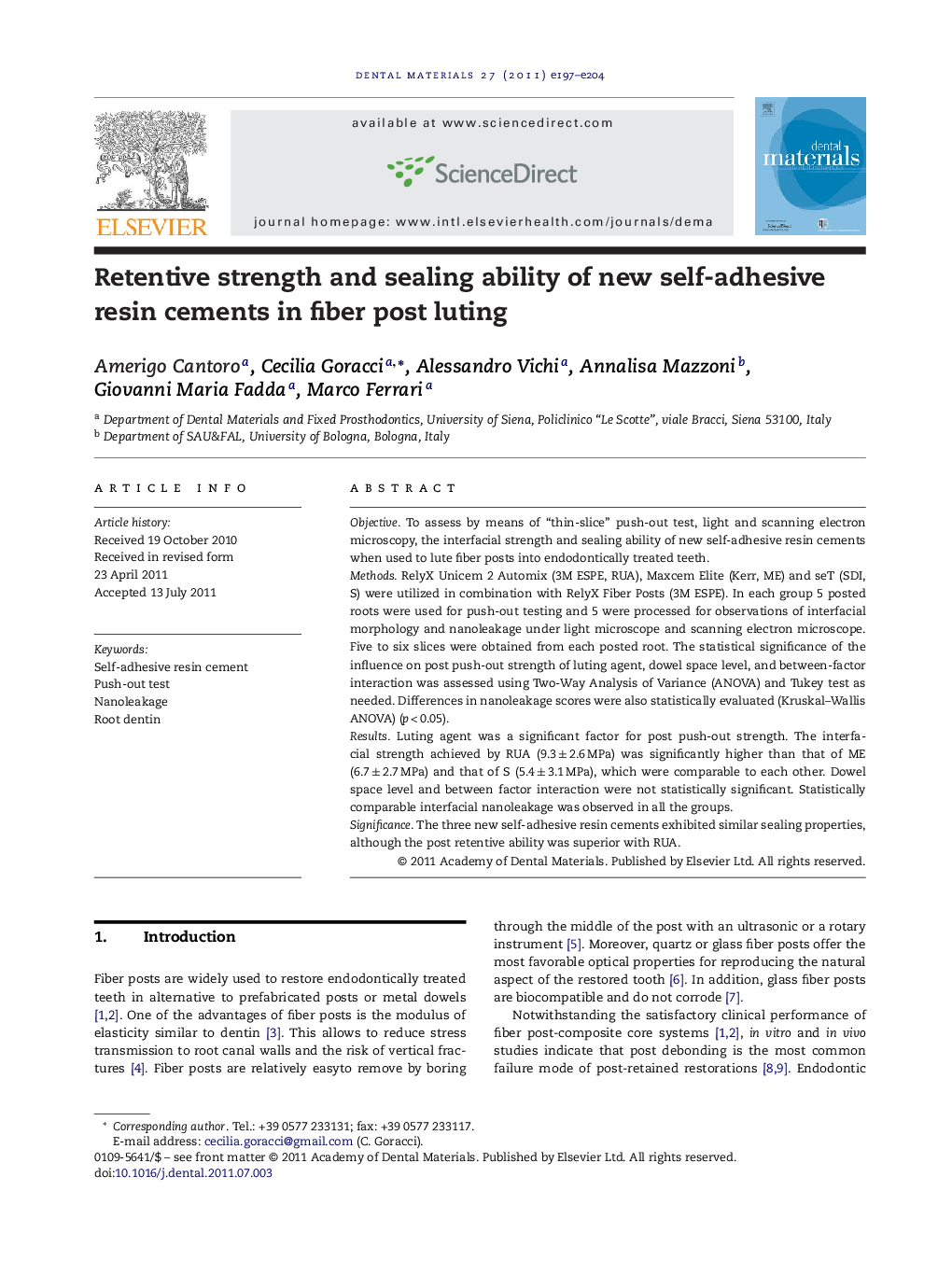| Article ID | Journal | Published Year | Pages | File Type |
|---|---|---|---|---|
| 1422169 | Dental Materials | 2011 | 8 Pages |
ObjectiveTo assess by means of “thin-slice” push-out test, light and scanning electron microscopy, the interfacial strength and sealing ability of new self-adhesive resin cements when used to lute fiber posts into endodontically treated teeth.MethodsRelyX Unicem 2 Automix (3M ESPE, RUA), Maxcem Elite (Kerr, ME) and seT (SDI, S) were utilized in combination with RelyX Fiber Posts (3M ESPE). In each group 5 posted roots were used for push-out testing and 5 were processed for observations of interfacial morphology and nanoleakage under light microscope and scanning electron microscope. Five to six slices were obtained from each posted root. The statistical significance of the influence on post push-out strength of luting agent, dowel space level, and between-factor interaction was assessed using Two-Way Analysis of Variance (ANOVA) and Tukey test as needed. Differences in nanoleakage scores were also statistically evaluated (Kruskal–Wallis ANOVA) (p < 0.05).ResultsLuting agent was a significant factor for post push-out strength. The interfacial strength achieved by RUA (9.3 ± 2.6 MPa) was significantly higher than that of ME (6.7 ± 2.7 MPa) and that of S (5.4 ± 3.1 MPa), which were comparable to each other. Dowel space level and between factor interaction were not statistically significant. Statistically comparable interfacial nanoleakage was observed in all the groups.SignificanceThe three new self-adhesive resin cements exhibited similar sealing properties, although the post retentive ability was superior with RUA.
